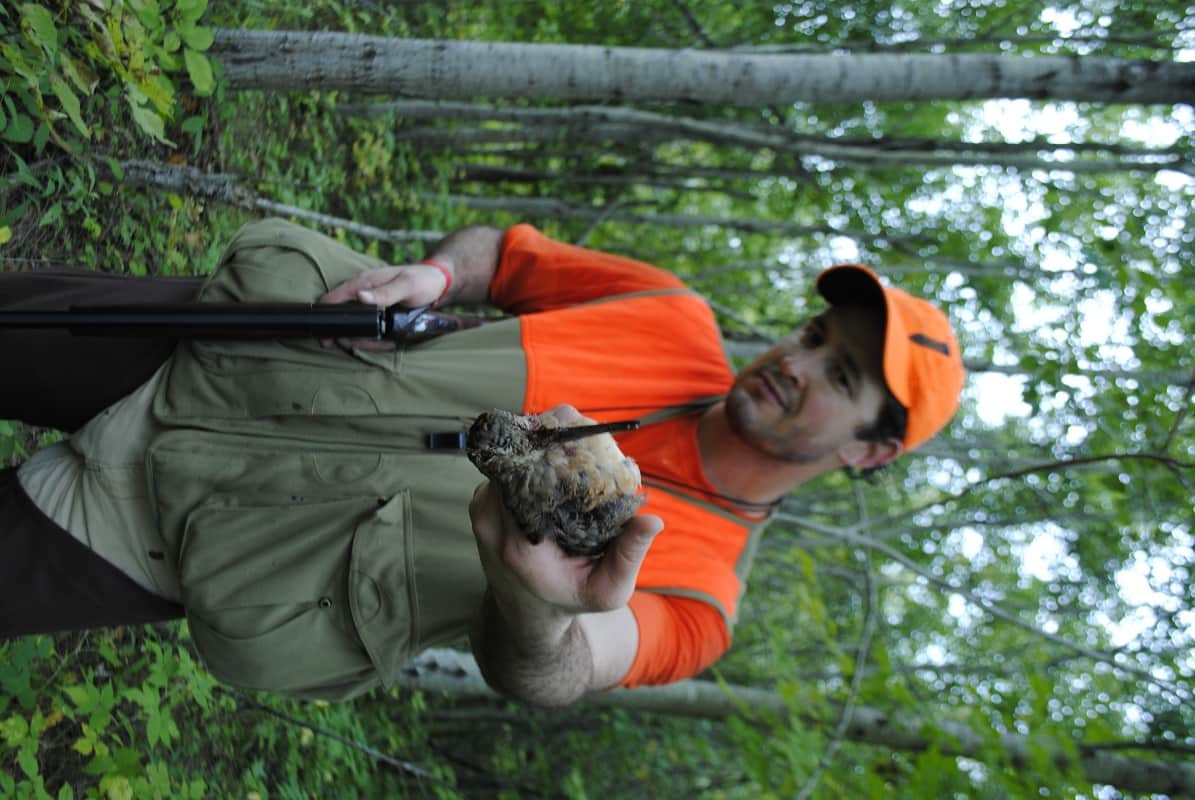Michigan Woodcock Season Opens Strong and Promising
Bob Gwizdz 09.25.14

Rub, my English setter, was locked up, solid as a statue, on point in the sort of aspens where you might not expect to find grouse and woodcock. It was an open area with more mature trees than you’d usually choose to hunt in, but the kind of place you dream about finding birds as you’d be able to swing in any direction without wrapping your shotgun around a popple. I stepped up toward Rub, but when the bird rocketed out of there, it flew to my left where Al Stewart and his son Chris were standing. I couldn’t shoot and neither could they.
The grouse flew right between the two of them. One of the guys managed to squeeze off a shot, unsuccessfully, as the bird disappeared over a thick patch of dogwoods. Rats. Even when things are going right they go wrong.
But such is early season bird hunting in Michigan. Finding birds and killing them are two entirely different things.
Fact is, it was our fourth flush of the morning, just a quarter hour into it. Chris Stewart had managed to knock down a woodcock just a few minutes earlier and we were optimistic there’d be more to come.
It was the opening day of woodcock season and we were in an area of Central Michigan where Al and I have been opening woodcock season for about a decade now, a place with lots of aspen on the uplands, tangles of alders in the lowlands, and plenty of fruit-bearing shrubs in both places. Google “grouse and woodcock habitat” and you’d likely see a photo of this place.
We followed up on the grouse, crossing the dirt road and moving into some low-lying tag alders that were as thick as an Irish accent. We moved birds—both grouse and woodcock—but flushes rarely resulted in shooting opportunities. By the time we made our way back to the truck after about two hours afoot, we’d flushed 20 birds (11 woodcock and nine ruffs), but had just the one timberdoodle in the game bag. I’d never even shouldered, let alone fired, my 20 gauge.
We took a short break to water the dogs and while we were discussing our options, Chris’ young setter wandered away and went on point. Chris went after him. When he returned he said he’d flushed four woodcock. They’d skipped across the road, he said, so we decided to go after them.

The birds went into a young clear-cut that had grown into picture-perfect woodcock habitat. I can imagine that later this fall, when the timberdoodles begin winging their way southbound, this aspen stand will be full of flight birds.
There were some resident woodcock in there, too, but it was tough sledding. Chris managed to drop a second woodcock. Meanwhile, my dog had had it; it was approaching 80 degrees and Rub was overheated. I decided to take him back to the truck and let the Stewarts finish the course when a woodcock jumped up at my feet. I pulled the trigger as it cleared the top of the popples. I didn’t see it fall, but heard it hit the ground. Chris brought his setter over and we found the adult hen dead in the ferns. So we had three.
After I put up Rub, we crossed the river and moved a couple more woodcock. Chris finished his three-bird limit.
We went to a low-lying area that had yielded numerous woodcock in the past but we failed to move a bird there. It was easy to see why—the wet summer we’d enjoyed allowed the grass to grow tall in the alder thickets along the creek bottom. Woodcock don’t like that; they like to be able to see. Woodcock want thick tree density so they are protected from predators above them, but you won’t typically find them in the tall grass, where they can’t use their large eyes and 360-degree horizontal vision. Think ferns, not grasses.

The adjoining uplands, however, had some birds in it. We moved a grouse and then a number of woodcock. I knocked one down, went right to it, but couldn’t find it. Scenting conditions had gone way downhill—it was hot and dry as the Badlands in the summer—and none of the dogs could pick up the scent. All of the dogs, who had done such yeoman work for us that day, were showing signs of fatigue. Rub, who has one gear (high), was gassed.
So I called it a day and took Rub down to the creek to let him cool down. Al and Chris hunted another 30 minutes, putting up two more grouse, they told me, but not getting any shooting.
Al had counted 30 flushes (not counting re-flushes) in a little less than five hours on the ground—a dozen grouse and 18 woodcock. Most of grouse failed to offer any shooting, but it’s good to know they’re there. In a couple of weeks, when the leaves start thinning out, they should offer some opportunity. And I noted the wild grapes were heavy with fruit. Over the years, I’ve found a lot of grouse in areas with grapes come December.
So I made a mental note of where the grapes were. What I saw, this opening day of woodcock season 2014, was that I have a lot to look forward to as autumn advances.
For more information on Michigan hunting go to michigan.org. Click here to purchase a Michigan hunting license online.
This article was produced in partnership with Pure Michigan.

